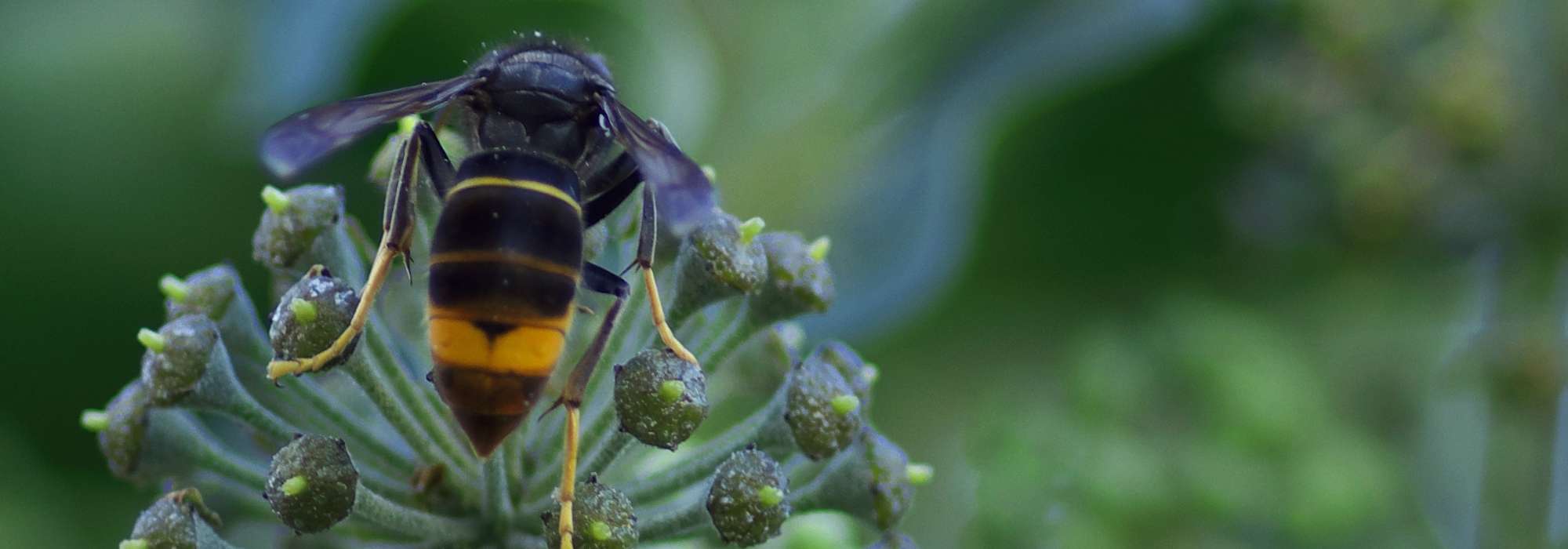
Asian Hornet Trap: How to Make It - Illustrated Tutorial
A selective trap to capture queens
Contents
The Asian hornet is an invasive insect, responsible for an imbalance in our ecosystem. It particularly targets bees, devouring them without remorse, much to the dismay of beekeepers, and it harms pollination.
Currently, commercially available traps are not specific and do not protect other pollinating insects. A few years ago, the Anti Asian Hornet Action Association developed a selective and effective trap that can be made at home with minimal resources.
Discover how to easily make a trap for female Asian hornet founders!
Where and when to install the Asian hornet trap?
When to Install the Trap?
Barely out of hibernation, the female founders will seek to build their nests. Traps should therefore be set up at the beginning of the nesting period, when temperatures exceed 13°C during the day, which is from mid-February in the mildest regions until mid-April. Beyond this period, the trap becomes ineffective as the queens have built their nests and will not emerge again.
Note: Outside of these periods, remove the trap to avoid accidentally capturing European hornets. Also, ensure that the captured hornet is indeed Asian and not European; if not, release the insect to preserve biodiversity.
Where to Install the Trap?
Install your trap near a woodpile, close to a sheltered water source, in a flowering area, and of course, near beehives.
The materials needed to make the trap
To make your trap, you will need:
- 2 plastic water bottles
- 1 tongue depressor (available at pharmacies) or alternatively 1 popsicle stick cut in half
- 1 craft knife
- 1 pair of scissors
- 1 foam disc
- 1 ruler
- 1 felt-tip pen
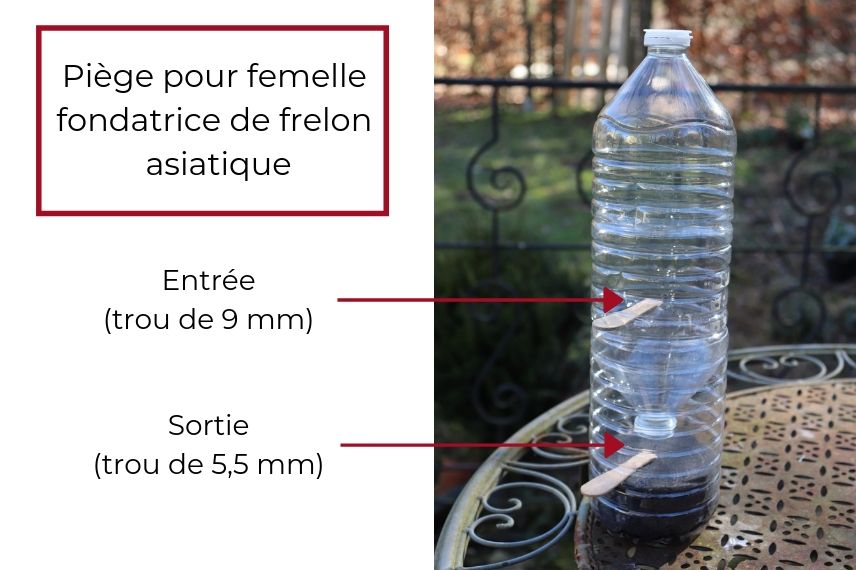
For the bait, you will need:
- beer, preferably non-alcoholic,
- a bit of honey or cider,
- a bit of syrup or apple juice.
The construction of the trap
To make your Asian hornet trap, you need to:
- cut the first bottle in half, approximately at the midpoint, using a craft knife or a pair of scissors.
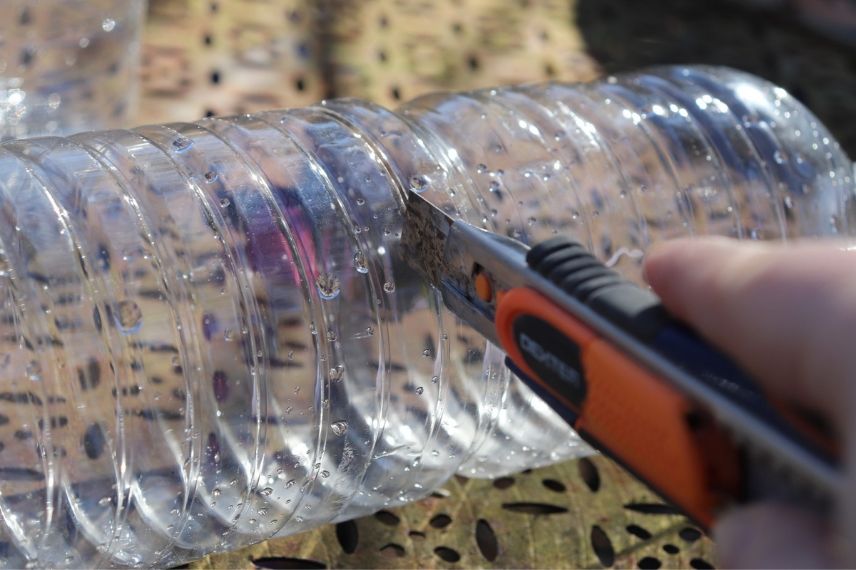 Cutting the first bottle
Cutting the first bottle
- cut a circle of foam (or a wooden disc if foam is unavailable) to the size of the inner base of the bottle and place it at the bottom. This foam will be soaked in bait, preventing the insects from drowning.
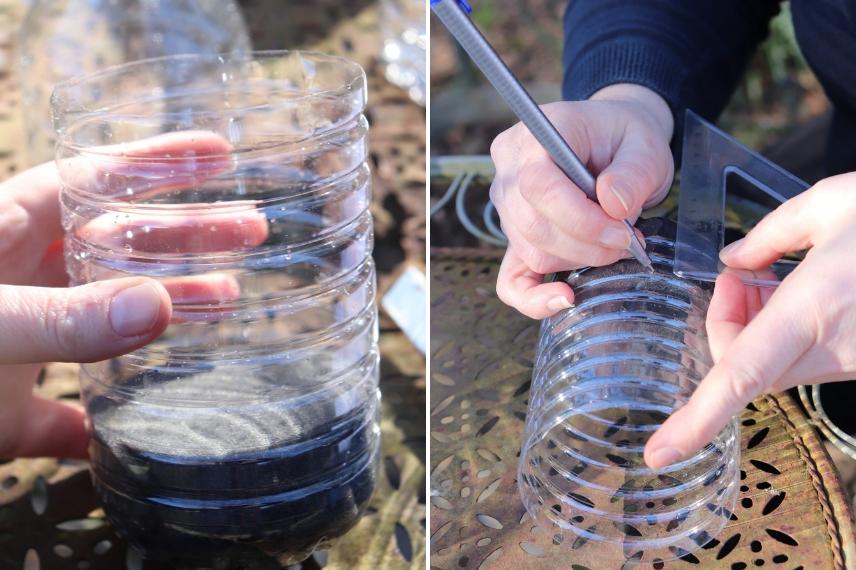 Placing the foam / creating the exit opening
Placing the foam / creating the exit opening
- draw and then cut a rectangle that does not exceed 5.5 mm in height, just above the surface of the foam. This will be the lower exit. Remember to create a notch to insert a half-stick. Ensure that the width of the notch matches that of the stick. Finally, refer to the following diagram.
 Diagram of the lower exit opening
Diagram of the lower exit opening
The size of the exit opening allows small insects to escape unharmed while the Asian hornet remains trapped.
- take the other part (with the neck) of the same bottle, remove the cap and invert it to fit into the first part.
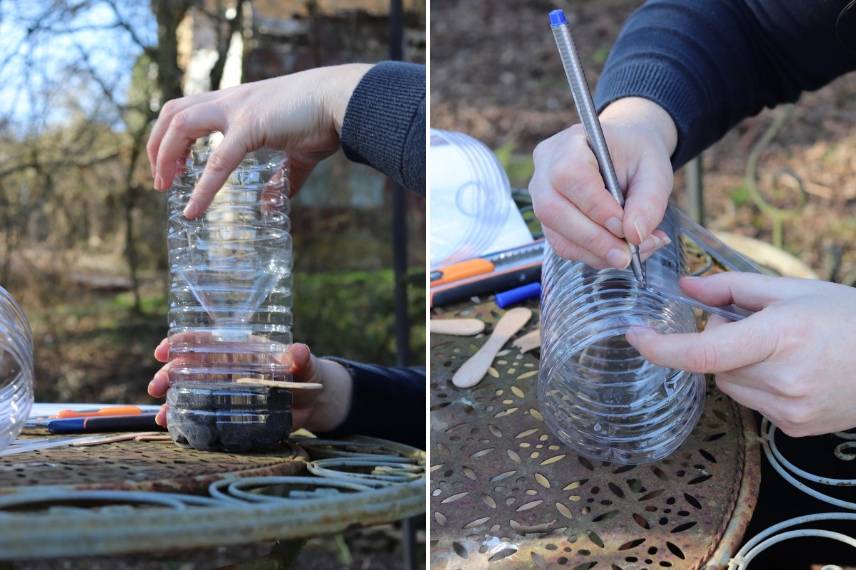
- create the second opening according to the following diagram. For this, draw and incise a rectangle that does not exceed 9 mm in height this time. This will be the upper entry opening. Similarly, remember to create a notch to insert the other half-stick.
 Diagram of the upper entry opening
Diagram of the upper entry opening
This opening is large enough to allow Asian hornets to enter. European hornets, being larger, cannot pass through.
- cut the second bottle and keep only the part with the neck. Fit it on top of the trap. It should not block the entry opening (if it does, create a notch; a simple rotation of this part will close the entry to prevent any escape). Put the cap on and insert the sticks into the designated slots. These serve as landing and take-off platforms.
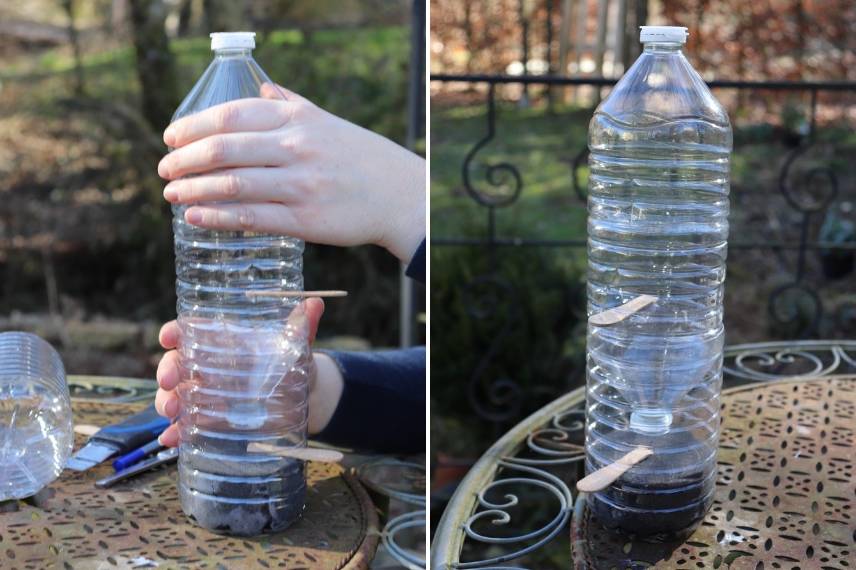 Fit the upper part / trap completed
Fit the upper part / trap completed
All parts being removable, you can disassemble and reassemble the trap to add bait or release insects that may not have found the exit or are too large to pass through the lower opening.
It may happen that the parts are stuck. In this case, simply clean the trap with hot water, reinsert the bait, and reassemble the trap.
How to eliminate Asian hornets:
It is likely that the trap contains not only Asian hornets. To safely release other insects, place your trap in the refrigerator for 1 hour to numb them. Then simply crush the Asian hornets and release all the others.
Read also
A Wasp Nest in Your Garden: What to Do?To find out more...
- Note that a 100% selective trap does not yet exist, and you may accidentally capture other insects, including the European hornet, which is much less aggressive. We recommend releasing all mistakenly captured insects from this trap to protect biodiversity.
- Discover Olivier’s advice sheet to learn everything about the Asian hornet, its habits, control, and prevention: “Asian hornet: how to recognise and combat it“.
- Subscribe!
- Contents
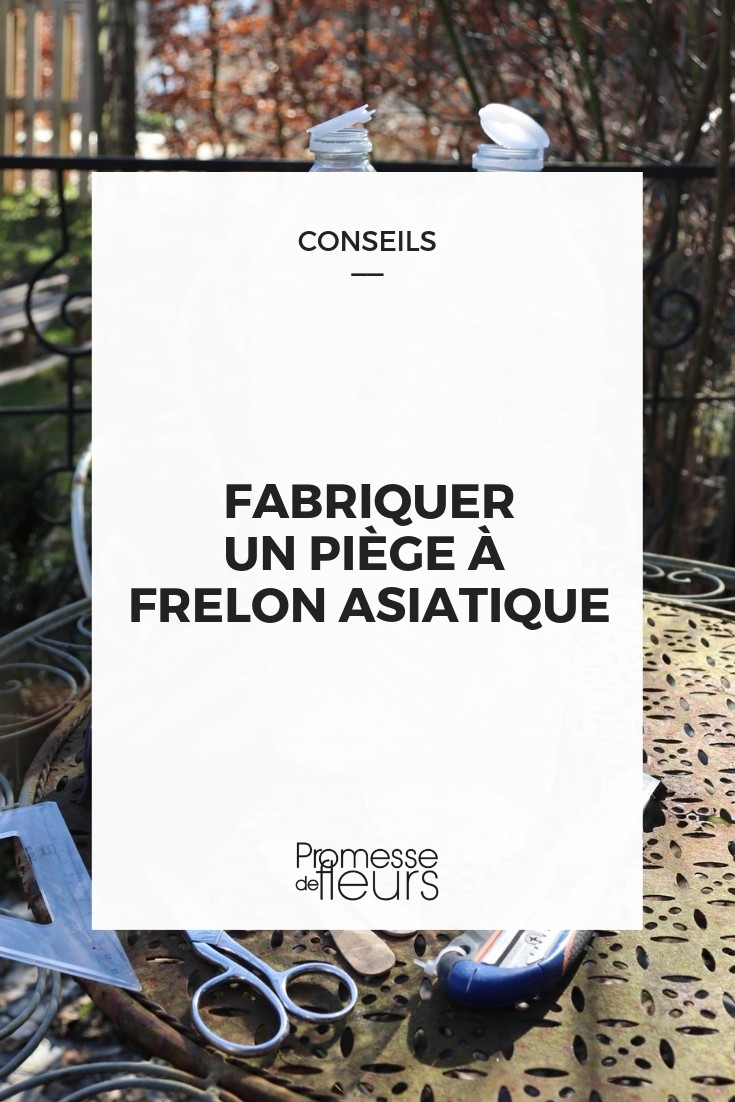































Comments